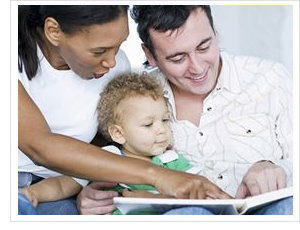Why teach Reading Early?


Introduction
The issue of when to teach children to read is a hotly debated one. Increasing numbers of parents are teaching reading early, and increasing numbers of children are learning to read as preschoolers.
Yet, there is no shortage of parents, educators and developmentalists opposed to this phenomenon. Some believe that early reading harms children, while others think children are cognitively not ready to learn to read until they start school. A commonly heard criticism is that it is wrong to “push” children to read before the age of five or six. Some would even like to see the general reading age pushed back to seven.
It is our belief that teaching children to read at a young enough age frees them from the potential burden of learning to read in school. We believe that it is learning to read too late that actually causes the process to become burdensome. For more on how these views fit in to the debate surrounding early learning as a whole, go to the Early Learning: For + Against section.
Babies are Linguistic Geniuses
Glenn Doman, founder of the Institutes for the Achievement of Human Potential (IAHP), said it first: babies are linguistic geniuses. Doman points out that while learning to speak one’s native language perfectly may be an everyday miracle, it is a miracle nonetheless:
To every baby born in Philadelphia tonight, English is a foreign language – no more and no less foreign than Kurdish or Hindi. And then a miracle happens: he learns his language. How does he learn it? We kid ourselves that we teach him. My foot! We teach him ‘Mommy,’ ‘Daddy’ and ‘no.’ And the other hundred thousand words and a good vocabulary he learns by himself.
Doman notes that children learn their language through context; not by having the meanings of words explicitly taught to them (which is the way foreign languages – and reading – are usually taught in school). Likewise, writing about the usefulness of text pointing (running a finger under the words as they are read) in the book Native Reading, computational biologist Timothy Kailing zeros in on the value of implicit teaching (which children respond well to) over explicit teaching (of the kind children are subjected to in school):
Inconsistent and explicit text pointing [when reading to a child] disturbs the attention of a child, it interrupts the cadence of the language, and it ends up making reading more confusing for a child – and a lot less fun… You need to make text pointing a consistent, accurate but unobtrusive habit.
Kailing has coined the phrase “native reading” to refer to the natural ability of children under three to acquire an instinctive, intuitive, or native feel for their language – one, he says, that can easily be extended to reading. He believes that any child can learn to read by the age of three provided her home environment provides sufficient correlations between the written and spoken forms of language.
This is similar to Doman’s view that most babies do not learn to read for the simple fact that they cannot see text as it is normally presented to them. Doman advises that by treating the written form of language as we treat the spoken form (i.e. simplifying it for babies), a small child can learn to read as effortlessly and instinctively as he learns to speak:
In order to understand language through your ear, there are three requirements: it has to be loud, clear and repeated. And instinctually, all mothers speak to their babies in a loud, clear, repeated voice… The reason babies haven’t learned their language through the eye to the brain as they have through their ear to the brain is because in order to read a language, it must be large, clear and repeated – and this we have failed to do with babies… Make the words large, clear and repeated – and children learn very easily.
But isn’t learning to read early difficult?